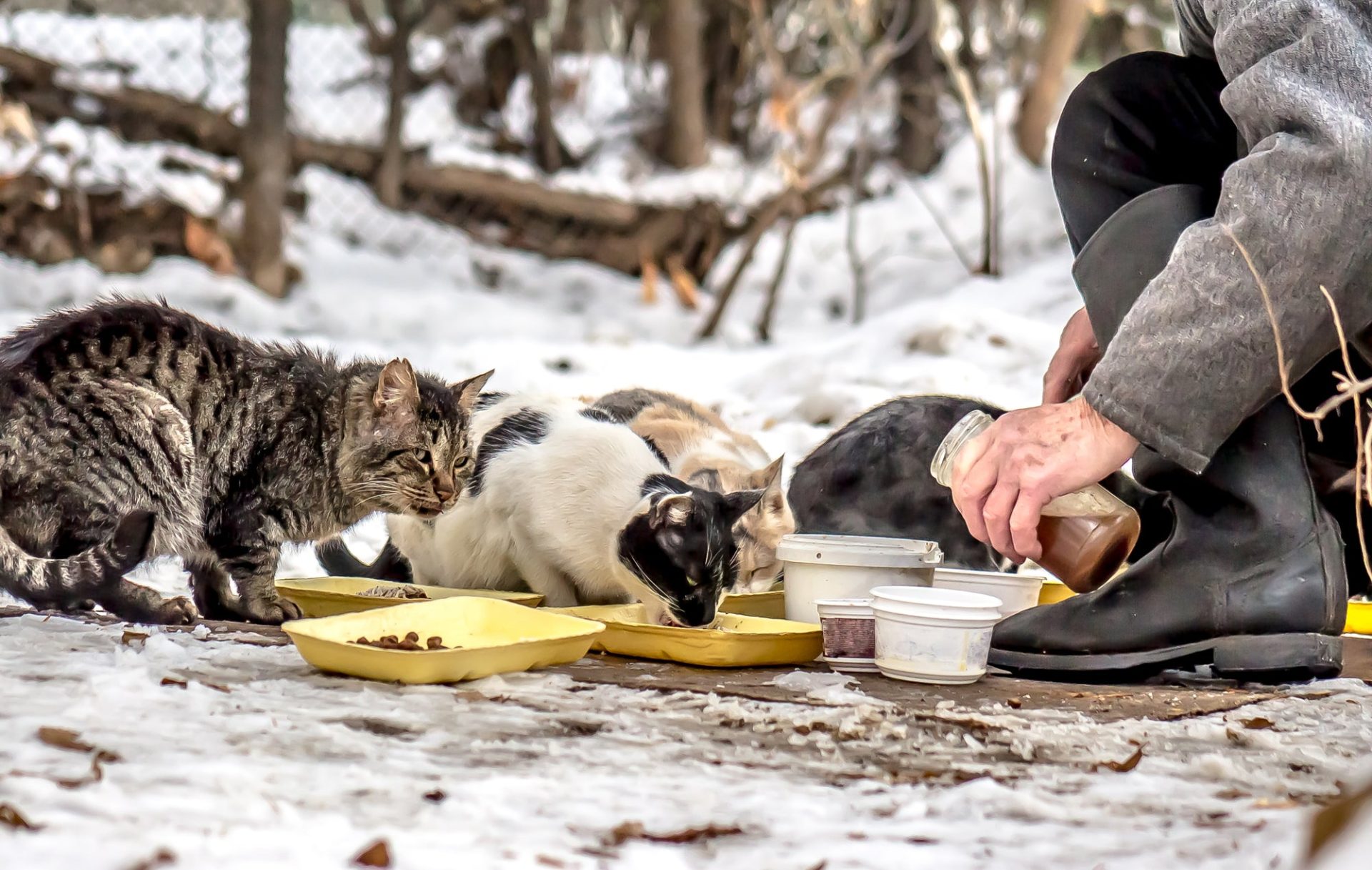Do you want to help every cute stray cat you see on the streets? We do too. But to do things right, you have to understand the difference between stray and feral cats.
What’s the Difference?
Both stray and feral cats are free roaming domestic cats who live outdoors. They may be entirely wild or cared for as community cats by their human neighbors. Where the two differ is how comfortable they are with human contact.
Stray cats currently live as outdoor cats and don’t have a home with humans, but they were socialized with people at some point in their lives. They may have left or lost their human families, but they still have a familiarity with humans and will be more receptive to food, touch, and affection from people. Many strays can be re-socialized and become pet cats again, but they can lose socialization over time and may become feral if they live wild without human companionship for too long.
Feral cats are outdoor cats who are not receptive to human interaction. They may have been kittens born and raised in the outdoors or pet cats who lost their socialization to humans. They are typically fearful or hostile toward humans and don’t respond well to socialization. Feral kittens can still be socialized when they’re young, but vets don’t recommend trying to socialize a kitten over four months old. Most adult feral cats will not be happy living indoors or alongside humans.
How Can You Help Your Local Feral Cats?
While it may be tempting to try to trap and re-home every adorable cat you see living wild, that can actually be detrimental for feral cats. So what’s the best way to help them?
If you have local feral cat colonies, you can help them lead happy and healthy lives by providing food and safe shelter and coordinating with your neighbors to make sure that they are well cared for. In return, they’ll help keep down pesky rodent populations. However, if you’re not careful, all that loving care can allow these cats to breed and create more feral kittens—which is harmful for local wildlife and results in more unhoused cats. That’s why experts recommend TNR programs for feral cats.
What are TNR Programs?
“TNR” stands for trap, neuter, return—A.K.A. the best way we can help feral cat populations. In trap, neuter, return programs, community members safely and kindly trap stray and feral cats in humane traps and take them to veterinarians to be spayed or neutered. Along with their spay or neuter, cats receive a checkup and vaccinations before getting eartipped (a universal sign to show that they have already been neutered and vaccinated) and returned back to their home territory.
These TNR programs are humane and effective. They allow feral cats to continue to live in the colonies and communities they call home while preventing mother cats from producing more feral kittens. The goal is to be kind to animals and treat them with respect while reducing the number of cats living on the streets.
How Can Shelter Systems Help?
Animal shelters and humane societies are amazing organizations that are designed to help get pets into happy homes. If you’re looking to help community cats in your area, contact your local shelters and ask for their recommendations and what programs they have in place. Many shelters work with TNR programs to help manage local populations, and they may have a place for friendly stray cats who are good candidates for adoption.
,

